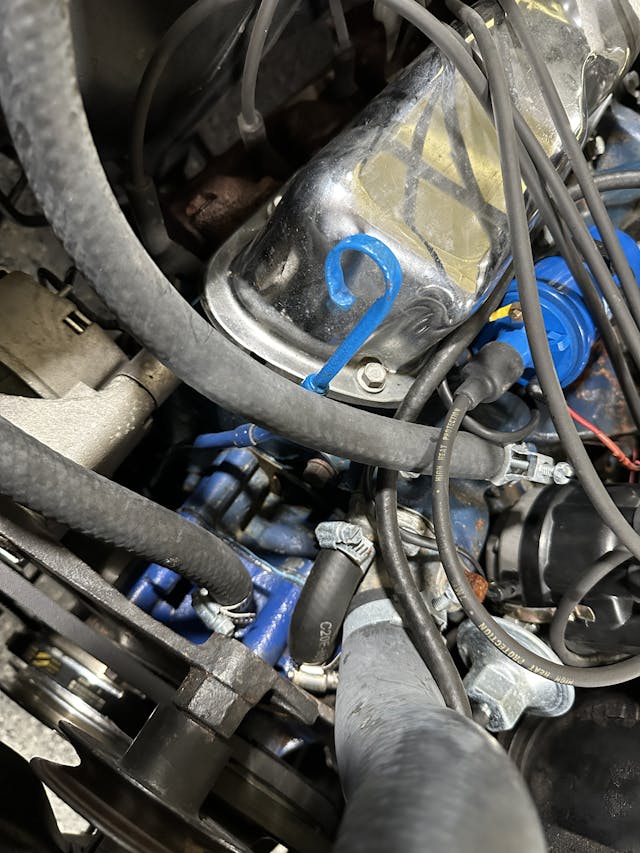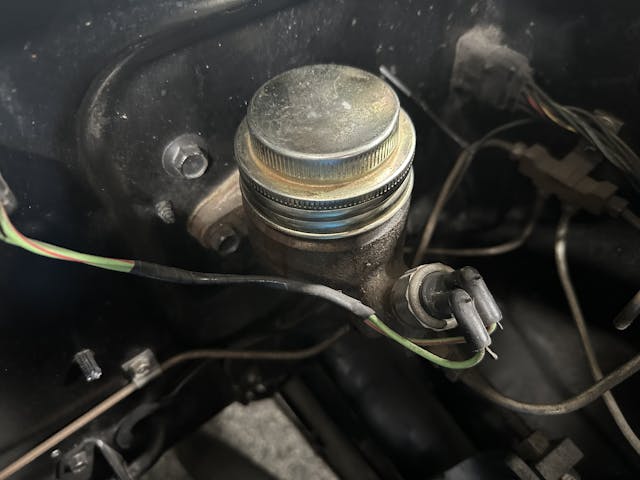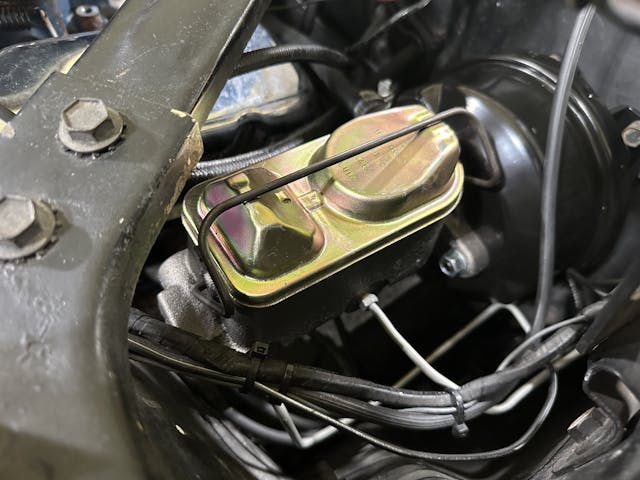Media | Articles
The First Ride: An Early Ford Mustang Spotter’s Guide
April 17 marks 60 years since the Ford Mustang’s public debut at the 1964 New York World’s Fair. The original pony car immediately became a pop-culture and automotive phenom, and it remains one of the most impactful cars in history. We’re celebrating with stories of the events surrounding the Mustang’s launch, the history of the early cars, and tales from owners. Click here to follow along with our multi-week 60 Years of Mustang coverage. -Ed.
When Ford opened the gate to the Mustang’s corral, few people knew just how much interest it would garner, or how quickly. As with any cultural phenomenon, there’s value in finding the early artifacts that shaped the future as we now know it. That combination has led to an interesting subset of Mustang enthusiasts who seek out early production Mustangs, or 1964.5 models. (Even the earliest Mustangs are technically 1965 model-year cars, but they are commonly referenced as ‘64.5s to distinguish their early build date.) Even if it’s not your muse, it is always interesting to look at how rapid production increases affected how the cars were built and the parts that were used. Here’s what to look for when spotting an early Ford Mustang.
Production for the Mustang began in March of 1964, and like anything that makes the leap from idea to physical object, there were some adjustments to the parts and process along the way. Some were likely due to nothing more than ease of assembly, or a change in supplier for the parts, or just subtle changes from the same supplier. The exact dates on a few changes will likely be debated forever, but even if the timing of the shift is imprecise, we know these are typical features of what is commonly called a 1964.5 Mustang.
The VIN

The first digit in the vehicle identification number on Fords of this era is indicative of the model year for the vehicle. That alone is not particularly helpful as all early Mustangs are 1965 models. The second digit in the VIN calls out the production location: “F” for Dearborn, Michigan and “R” for San Jose, California is common for early cars.
Under the Hood

There are a few key components in and around the engine bay that point to an early build. First, we head to the passenger side of the compartment.
Marketplace
Buy and sell classics with confidence
Generator
The charging system of a car is critical to long-term functionality, and historically there have been three systems for powering the electrical needs of an automobile: Total loss, generator, and alternator. Total loss is uncommon, and the difference between a generator and alternator is simply which part of the operation spins.

Early Mustangs were equipped with generators, which are slightly less efficient than alternators but still functionally fine for the car. Typically, the generator is visually different from an alternator, making this an easy spot with the hood open. Also different, and related to the generator, is the radiator core support that has pressed vents to allow airflow to cool the battery and generator, along with a longer dipstick to make it accessible through the generator bracket. Later cars moved the dipstick to the driver’s side of the engine block.




Horns behind radiator

Horns might not have been legally required, but just like today, buyers have expectations of being able to convey a one-tone message to those around them in traffic. For the early Mustang this came by way of a pair of horns mounted behind the radiator on the frame rails. Later cars had the horns mounted to the radiator core support.
Hood hinges

The hood hinges would be painted gloss black on an early production car.
Hood stiffener and headlight

This is also known as the “improved” hood, as it comes down to a change in manufacturing after the first run of hoods was produced. The early production featured a hanging “skirt” of sorts from the leading corners of the hood. Later cars had this edge rolled in and flattened. This additional material on the early hoods also required a tapered edge on the headlight nacelle. This means there is the possibility to have one or the other, or both, as cars can get parts swapped on and off for any number of reasons.


Brake light switch mounted to the master cylinder


Dual circuit brake systems were not yet widespread until 1967, so the single-pot master cylinder is not a tell in and of itself of manufacture date. Instead, it is the brake light switch location that can denote an early parts arrangement versus that of the later car which mounts the switch separate from the master cylinder.
In the interior

The steering wheel is unique to early production cars and is a great place to start in dating the car. Also on the steering column is the turn signal stalk which changed as production ramped up in later 1964. The fresh air knob on some early cars was stamped with an “A” while many had a black knob with no markings. Some very early production cars had a passenger seat that did not adjust.




The lock knobs on the doors also changed between early and standard production, going from being color-matched to the interior to being generic chrome for all models.


One of the borderline obvious bits in the interior is the change of “GEN” warning light to a “ALT.” This of course matches with the generator or alternator under the hood, but if a car has been engine-swapped or missing its engine, this light might remain unchanged for the sake of convenience.

The trunk is technically the interior, so be sure to take a glance under the truck lid to see if the taillight wiring is the correct pigtail-style for early production or has no connections like a later first-generation car.



Exterior
Is it a fastback? If yes, then it’s not a 1964.5. Fastback production did not begin until August of 1964. Also of note is the change in the gas cap. The early cars had a three-spoke style cap that had no retention to the vehicle, while later cars had a round cap that also had a security cable that prevented it from being accidentally left atop a gas pump or falling off while driving.



The above is not an entirely exhaustive list, as it is difficult to nail down the timing of many changes for early production Mustangs. That said, these easily spotted items are good indicators. It’s always possible that with time and age, prior owners may have tweaked a feature or two to their liking on a car that has been restored, so if you really want to be sure, follow the old adage of trust but verify. Consult a Mustang specialist to discuss these and other items that can be signifiers of an early production car.
***
Check out the Hagerty Media homepage so you don’t miss a single story, or better yet, bookmark it. To get our best stories delivered right to your inbox, subscribe to our newsletters.






































At an easy glance, if I’m not mistaken, the 64 1/2 has a slightly smaller compressed MUSTANG on the front fenders.
you are absolutely right, I picked up a fender at a car show and thats what is on it.
Yup, by about a quarter inch. No idea why they made such a goofy change.
Fastback production started in August of 1964, not 1965.
A slip of the finger… Thanks Glenn, I’ve updated the copy.
64.5 convertible owner here, and even though there are almost 100 clues to the early cars, I think Kyle did nail the most visible ones. For me one of the most fun things about these early Mustangs are the debates on all the flying changes made to keep the assembly lines moving in the face of unexpected demand. No orderly records (they burned ), so the concours gurus are faced with primitive methods of finding the facts, like letters, personal recollections and forensic photo squinting at unrestored cars.
Oh yeah – don’t try to swap a later trans (6 bolt bell housing) on to an early motor (5 bolt holes).
The tethered gas cap came about because they had a high theft rate, iirc.
The gas cap on the right is the “standard” gas cap and the one on the left is the GT cap (note the GT stripes on the fastback wearing it). I had the gas cap on the right on my 1965 production 289-2V coupe but it was tethered.
They were known for making running changes on the production line as time went by. I owned a 1965 hardtop built April 9 1965 built in NJ. The dash had a generator warning light not an alternator. There were also a few other items when looking for parts that would be stated in the service manual “after such and such date” but my car was a mix of before and after parts. Made for some fun sometimes doing repairs
Nice guide for a short list of differences. Great cars!
Detroit could not tool up fast enough for this level of immediate production today. Not enough skilled toolmakers/machinists/machine builders. And a lot of changes on the fly! Remarkable. None of the ‘Big 3″ could pull this off today.
May I add all domestic suppliers too! No waiting for parts on the boat. Speeds things up.
The engine oil dipstick is still on the “passenger” side of the engine. Right behind the alternator. Look more closely at your photograph
My college beater was an early Mustang. 260 V8, no backup lights, no windshield washers. I remember that it had a generator (had to rewire it at one point). Great car.